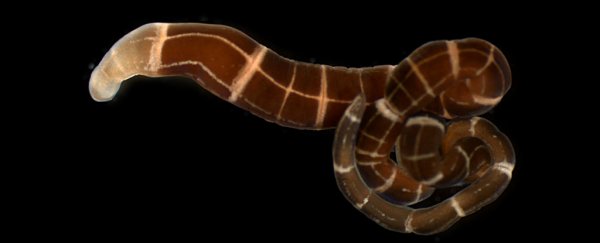As superpowers go, being able to regrow your own head has to be way up there with the best of them, and researchers just discovered four new species of worm that can pull off this amazing regenerative trick.
Not only that, but the new study reveals that this ability evolved fairly recently and independently of other species – and that knowledge could be crucial in working out where this regrowth ability comes from in the first place.
Scientists had previously assumed that being able to regrow body parts is an ancient trait that some species have lost and some species have kept down the millennia. Now it appears that this long-standing idea needs a rethink.
"This means that when we compare animal groups we cannot assume that similarities in their ability to regenerate are old and reflect shared ancestry," says one of the researchers, Alexandra Bely from the University of Maryland.
"We need to be more careful when comparing regeneration findings across different groups of animals."
Many animals have some extent of regenerative capability – even humans, in the way our skin heals over after an injury – but certain creatures are much better at it than others. Spiders can grow new legs, for example, and one species of ribbon worm can regrow almost its entire body.
For the purposes of this study, the researchers collected 22 species of ribbon worm along the coasts of the US, Argentina, Spain, and New Zealand from 2012 to 2014, adding in data on 13 other species from previous studies.
They used bisection to test the worms' ability to regenerate. Eight species were found to have the ability to regrow their heads and an entire individual from just the back portion of the body: four of these species we already knew about, and the other four are new.
Bearing in mind the ribbon worm's reputation for being the best of the best when it comes to regeneration – the Lineus sanguineus species can restore itself from just two-hundred-thousandths of an individual – it's actually surprising that only eight species here could regrow a whole brain and head.
What's more, it looks like each species picked up this superpower independently somewhere along the way: the trait was not passed down the generations from a common ancestor.
"The ancestor of this group of worms is inferred to have been unable to regenerate a head, but four separate groups subsequently evolved the ability to do so," says Bely. "One of these origins is inferred to have occurred just 10 to 15 million years ago."
Considering regenerative abilities are thought to have first evolved over half a billion years ago, that's relatively recent history.
If we're going to understand more about regeneration and how we could potentially adapt it for purposes like organ transplants, these new findings are important clues. It could be time to take another look at how regenerative abilities evolved, and how they differ between types of animal.
"These species that have recently evolved head regeneration will make for excellent models for studying the emergence of new regeneration abilities in animals," says Bely.
"We can now ask such questions as what changes in molecular processes led to novel head regeneration ability."
The research has been published in Proceedings of the Royal Society B.
